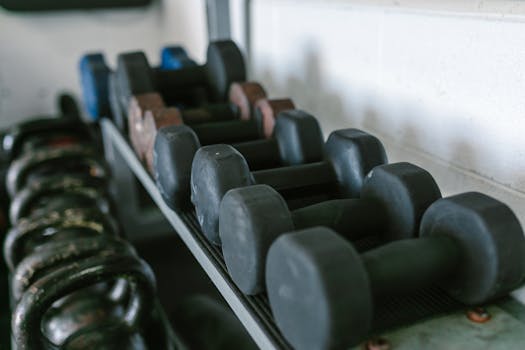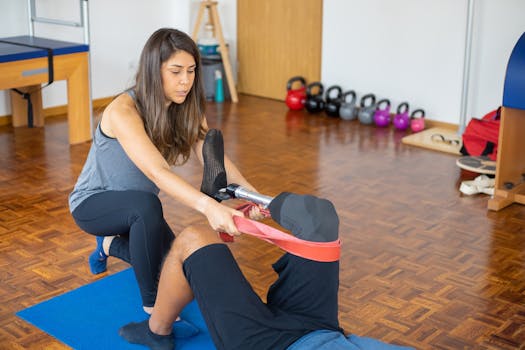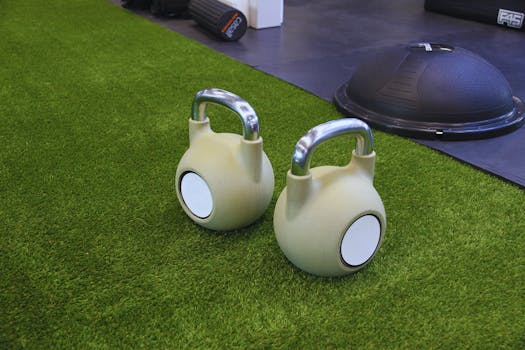
Beginner’s Guide to Strength Training at Home
Strength training at home is a great way to improve your overall health and fitness without having to spend money on a gym membership. With a few simple pieces of equipment and a bit of dedication, you can get started with strength training at home and see real results. In this article, we’ll provide you with a beginner’s guide to strength training at home, including the benefits of strength training, the equipment you’ll need, and a sample workout routine to get you started.
Benefits of Strength Training

Strength training is an important part of any fitness routine, and it offers a number of benefits for your overall health and wellbeing. Some of the benefits of strength training include:
- Increased muscle mass: Strength training helps to build muscle mass, which can improve your metabolism and overall health.
- Weight loss: Strength training can help you lose weight and maintain weight loss over time.
- Improved bone density: Strength training can help to improve bone density, reducing your risk of osteoporosis and fractures.
- Improved mental health: Strength training can help to reduce stress and anxiety, and improve your overall mental health.
- Improved sleep: Strength training can help to improve sleep quality, which is essential for overall health and wellbeing.
Equipment Needed

To get started with strength training at home, you’ll need a few simple pieces of equipment. Some of the most common pieces of equipment used in strength training include:
- Dumbbells: Dumbbells are a great piece of equipment for strength training at home, and can be used for a variety of exercises.
- Resistance bands: Resistance bands are lightweight and portable, and can be used for a variety of strength training exercises.
- Kettlebells: Kettlebells are a type of weight that can be used for strength training exercises, and are great for building functional strength.
- Barbell: A barbell is a long bar that can be used for a variety of strength training exercises, including squats, deadlifts, and bench press.
Sample Workout Routine

Here’s a sample workout routine that you can use to get started with strength training at home:
Day 1: Chest and Triceps
- Warm-up: 5-10 minutes of cardio, such as jumping jacks or jogging in place.
- Barbell bench press: 3 sets of 8-12 reps.
- Incline dumbbell press: 3 sets of 10-15 reps.
- Tricep pushdown: 3 sets of 10-12 reps.
- Tricep dips: 3 sets of 12-15 reps.
- Cool-down: 5-10 minutes of stretching.
Day 2: Back and Biceps
- Warm-up: 5-10 minutes of cardio, such as jumping jacks or jogging in place.
- Pull-ups: 3 sets of as many reps as possible.
- Barbell rows: 3 sets of 8-12 reps.
- Dumbbell bicep curls: 3 sets of 10-12 reps.
- Hammer curls: 3 sets of 10-12 reps.
- Cool-down: 5-10 minutes of stretching.
Day 3: Legs and Shoulders
- Warm-up: 5-10 minutes of cardio, such as jumping jacks or jogging in place.
- Squats: 3 sets of 8-12 reps.
- Leg press: 3 sets of 10-12 reps.
- Standing military press: 3 sets of 8-12 reps.
- Seated dumbbell shoulder press: 3 sets of 10-12 reps.
- Cool-down: 5-10 minutes of stretching.
Tips for Success

Here are a few tips to help you succeed with strength training at home:
- Start slow: Don’t try to do too much too soon. Start with light weights and gradually increase the weight as you get stronger.
- Focus on form: Proper form is essential for strength training. Make sure you’re using the correct form for each exercise to avoid injury.
- Be consistent: Consistency is key when it comes to strength training. Try to work out at the same time every day or week to make it a habit.
- Get enough rest: Rest is essential for muscle recovery. Make sure you’re getting enough sleep and taking rest days as needed.
Conclusion

Strength training at home is a great way to improve your overall health and fitness. With a few simple pieces of equipment and a bit of dedication, you can get started with strength training at home and see real results. Remember to start slow, focus on form, be consistent, and get enough rest to ensure success with your strength training routine.





